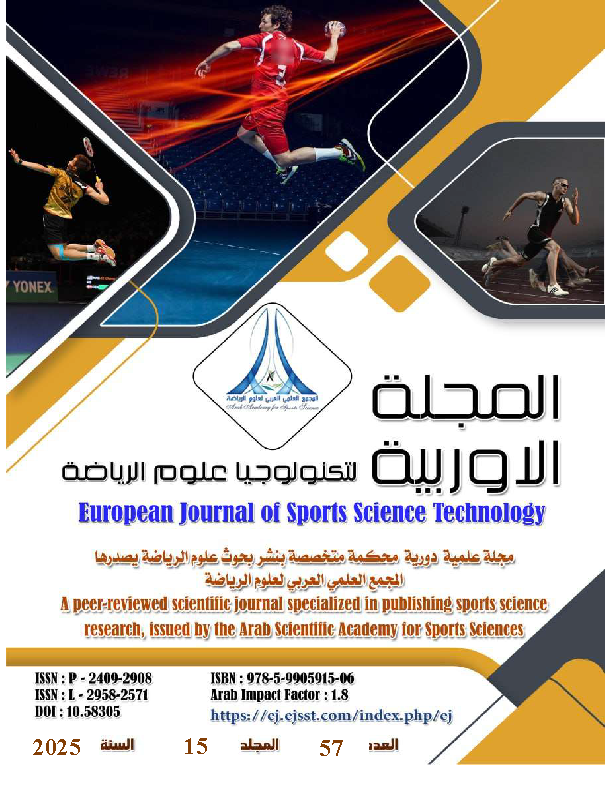The Effect of Rehabilitation Exercises Accompanying Laser Therapy for Athletes with Partial Tears of the Lateral and Medial Collateral Ligaments of the Knee
DOI:
https://doi.org/10.58305/ejsst.v15i57.621Keywords:
Rehabilitation exercises accompanied by laser therapy Partial tear of the collateral, lateral, knee jointAbstract
The importance of this research lies in the use of the latest method of physical therapy (laser therapy) in conjunction with rehabilitative exercises. The study aimed to develop rehabilitative exercises accompanied by laser therapy for athletes with partial tears of the lateral and medial collateral ligaments of the knee joint, and to identify the effect of rehabilitative exercises accompanied by laser therapy for athletes with partial tears of the lateral and medial collateral ligaments of the knee joint. The researchers used the experimental method with a single-group design for its suitability. Given the nature of the problem to be solved, the research sample included (6) individuals with partial tears of the lateral and medial collateral ligaments of the knee joint, from various activities and games. A clinical examination of the injury was performed by a specialist physician. Radiographic examinations were conducted for the research sample under the supervision of a specialized medical team from the hospital's specialized staff, after explaining the research concept and selecting the sample. Field research procedures included experiments and tests, including (measuring the muscle strength of the muscles operating on the knee joint, measuring the range of motion, and measuring the passive range of motion). The researchers performed rehabilitation exercises for a period of (8) weeks, with three rehabilitation units per week (Sunday, Tuesday, and Thursday). This resulted in a total of (24) rehabilitation units. The researchers concluded that rehabilitation exercises accompanied by laser beams used by the research sample members had a positive effect on developing the muscle strength of the muscles operating in the knee joint and the range of motion of the knee joint. They also contributed to reducing the level of pain for the research sample.










